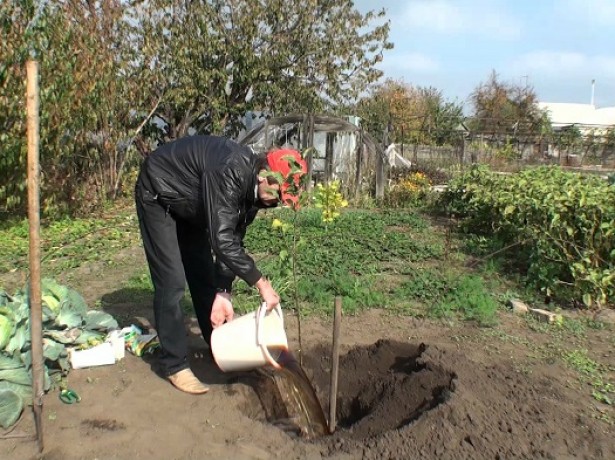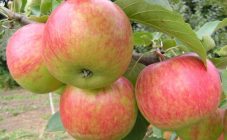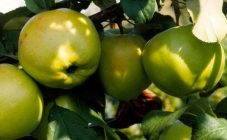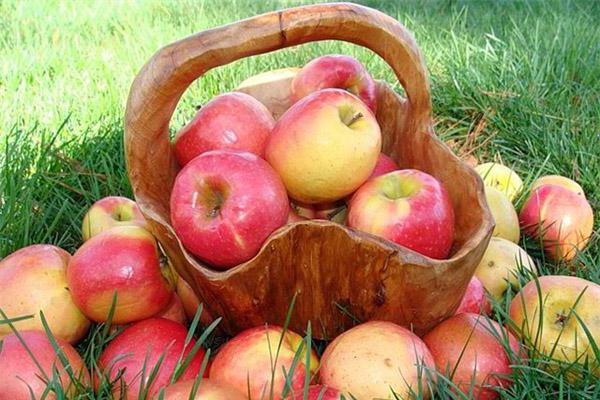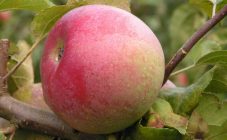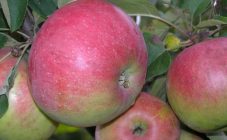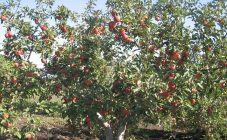Content:
The apple tree Orlik has a funny name that can be remembered well and for a long time. Gardeners call this variety of apple trees one of the most popular. The active growth of the tree over time contributes to the fact that the apple tree produces healthy and tasty fruits.
General information about culture
In most cases, the Orlik apple is cultivated in the central regions. Due to the excellent taste and benefits of fruit, the Orlik winter variety has long been liked by professionals and amateurs in the field of gardening.
The place of creation of the variety is the fruit and berry station, which is located in the Oryol region. The breeders decided to cross two apple varieties - Macintosh and Michurinskaya Bessemyanka, combining their best qualities. The result of the experiment was a variety with a winter ripening period, with a pronounced smell and bright taste. The name of the Orlik variety is directly related to its territory of origin.
Description of the Orlik apple tree
Apples are distinguished by sweet and sour harmonious taste, which is estimated at 5 points. Fruits with juicy pulp, their aroma is persistent and rich, and the size of apples is small. The average weight of one fruit is 120 g. The appearance of the fruit is quite appetizing: it is oval in shape, the skin of the fruit is tight and oily, it seems that the fruit is covered with a waxy coating. If you wash and wipe the apple, it will shine.
Ripening of apples is determined by color, the fruits turn yellow. A complete change of the cover color occurs during the storage of the fruit: the color of the peel changes from a bright yellow to a rich red blush, which covers the entire surface of the fruit. In addition, the peel of apples is dotted with white dots, characteristic of all winter varieties. The flesh of Orlik apples has a dense structure, a pleasant beige color, and a faint greenish tint located at the edges.
The nutritional properties of the apple tree are that the following elements are included in the fruit:
- P-active substances - 170 mg;
- pectins - about 13 percent;
- ascorbic acid - 9 mg;
- titratable acids - 3 percent;
- sugar - more than 11 percent for every 100 g;
- iron and vitamin C.
The fruits are attached to the branches with powerful stalks. Fruit ripening occurs in the second half of September. The ripe apple harvest is removed from the branches and placed in special boxes. In this case, a refrigerator or cellar is used for long-term storage. Apples do not lose their flavor even if they are stored in a cool place throughout the winter. Distinguished by excellent transportability and keeping quality, the Orlik apple variety is very popular and does not give up its positions in front of completely new species.
With the onset of spring, the branches of the apple tree are dotted with large buds that have a rich pink hue. As the petals open, this shade will gradually fade into white. Active fruiting is carried out by young sprouts of apple trees, with each season the yield increases.
In most cases, a mature apple tree after four years of life is capable of producing up to 25 kg of apples, after ten years - about 65 kg, and after fifteen years, the probable yield of the Orlik variety rises to 100 kg of apples per tree. Fruit ripening may be periodic.
The leaves of the apple tree are oval and dark green in color, sometimes a grayish tint is present. The foliage has sharp edges, a slightly rough surface, and a fleecy inner side. The kidneys are small in size, and their shape is slightly flattened.
In relation to the trunk of the apple tree, the main branches are located at a horizontal slope, sometimes they can be bent upward. The branches are covered with a thin gray-yellow bark. This type of apple is included in the group of medium-sized columnar class species with not too dense foliage. The main characteristics of the apple tree include average resistance to dangerous diseases and sufficient winter hardiness.
Planting and caring for this type of apple tree
A nursery, market or garden center is suitable for purchasing planting material. You can also buy your favorite seedlings on the Internet. During the purchase process, special attention should always be paid to the root system. It should be solid, uniform and strong. If the seedlings have rot or moldy spots, they should be discarded.
Both autumn and spring are great for planting an apple tree. Planting in spring helps the trees mature quickly - stronger branches and roots are formed. The culture is planted in the second half of April or in the first half of May. The earth should move away from frost and warm up well.
To save the root system from drying out, the method of abundant watering of the fruit crop is used. Before planting an apple tree in the spring season, its root system needs strong moisture. Experienced gardeners soak the roots in water for 24 hours, and in the process of planting they water them until the moment when the earth is saturated with moisture and stops absorbing it.
Planting in the autumn season allows young, still fragile seedlings to get comfortable over the winter. They grow into the ground, their roots develop and strengthen. In the spring, a mature tree enters the phase of active growth and vegetation.
How well the tree will be rooted depends on the correctly chosen planting place. The following recommendations must be taken into account:
- shady areas impair the growth of the apple tree;
- northern winds and southern sunshine cause significant damage to the plant;
- compact hybrids quickly take root with another tree if the distance between them is maintained within 2 meters during planting;
- groundwater should be located on a land plot at a depth of at least 2 meters;
- the land should be not acidic and preferably black earth, planting seedlings in swampy and stony soil is prohibited.
The most important stage is the preparation of the planting site for the apple tree - it is advisable to prepare it a month before the intended landing. To begin with, a hole is made, after which a hole is dug about 70 cm deep. Fertile soil is folded into two heaps, dividing into an upper and lower layer. This nuance is very important, since it is the first layer of soil that is used for further purposes.
A wooden stake is driven into the center of the planting pit, the bottom is drained. Fertile soil is mixed with a mixture of compost, humus and peat, then the pit is filled with the resulting substrate. It is recommended to fill the well completely in order to avoid the appearance of a funnel, which can cause the mixture to settle. The pit is covered with a protective film and left for two weeks to form the necessary environment for the root system.
Before planting the apple tree in the ground, the seedlings must be examined for the presence of root damage. If there are brown edges, they are cut off to a live area. The plant is checked for rot, and a rotten talker is also made, if one has not already been.
After all the manipulations have been done, the seedlings are lowered into the hole.Make sure that the peg is located on the south side of the trunk. The rhizome is straightened, the tree is watered, sprinkled with earth on top, which is carefully tamped.
You can fertilize trees with ripe manure or nitrogen-containing mixtures throughout their growth. Often used nitroammofoska and ammonium nitrate in the amount of 30 g.
Advantages and disadvantages of the variety
Gardeners who already have experience in growing the Orlik apple tree, and who are familiar with all the nuances regarding care and requirements, leave only positive reviews about this varietal variety. The main advantages of the Orlik apple tree are:
- frost resistance;
- early maturity;
- high yield, which increases every year;
- good transportability;
- unpretentiousness regarding care;
- compact culture and excellent neighborhood with other trees in small household plots.
As for the disadvantages of the Orlik apple tree, the main ones are the self-fertility of the variety, the small size of the fruit, irregular fruiting and the tendency that apples often crumble when ripe.


